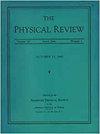Broadband and large-area optical chirality generated by an achiral metasurface under achiral excitation
引用次数: 0
Abstract
Optical chirality plays an essential role in chiral light-matter interactions with broad applications in sensing and spectroscopy. Conventional methods of generating optical chirality usually employ chiral structures or chiral excitations. Here, we propose to use an achiral metasurface consisting of a gold disk array excited by a linearly polarized light to generate optical chirality. Using full-wave numerical simulations, we show that the metasurface can give rise to large-area optical chirality of the same sign for a wavelength ranging from 1.2 to $1.5\phantom{\rule{0.28em}{0ex}}\textmu{}\mathrm{m}$. The magnitude of the chirality is comparable to that of circularly polarized plane waves. The emergence of optical chirality can be attributed to the asymmetric polarization singularity lines (C lines) in the near fields of the metasurface. We further explore the application of the proposed metasurface in chiral discriminations by simulating the absorption of chiral helix particles immersed in the near fields, and demonstrate that the left-handed and right-handed helix particles give rise to different absorptions. The phenomenon can be understood using an analytical theory based on the dipole approximation, which predicts differential absorption quantitatively agreeing with the numerical simulation results. Our study uncovers the subtle relationship between near-field optical chirality, polarization singularities, and symmetry. The results can find applications in optical sensing, chiral quantum optics, and optical manipulations of small particles.在非手性激发下由非手性超表面产生的宽带和大面积光学手性
光手性在光-物质手性相互作用中起着至关重要的作用,在传感和光谱学中有着广泛的应用。产生光学手性的传统方法通常采用手性结构或手性激发。在这里,我们建议使用由线偏振光激发的金盘阵列组成的非手性超表面来产生光学手性。利用全波数值模拟,我们证明了超表面可以在波长范围为1.2到1.5\phantom{\rule{0.28em}{0ex}}\textmu{}\mathrm{m}$的范围内产生相同符号的大面积光学手性。手性的大小与圆极化平面波的大小相当。光手性的产生可归因于超表面近场的不对称极化奇异线(C线)。我们通过模拟手性螺旋粒子在近场中的吸收,进一步探讨了所提出的超表面在手性鉴别中的应用,并证明了左手和右手螺旋粒子会产生不同的吸收。这种现象可以用基于偶极近似的解析理论来理解,它定量地预测了微分吸收,与数值模拟结果一致。我们的研究揭示了近场光学手性、偏振奇点和对称性之间的微妙关系。研究结果可以在光学传感、手性量子光学和小粒子的光学操作中找到应用。
本文章由计算机程序翻译,如有差异,请以英文原文为准。
求助全文
约1分钟内获得全文
求助全文

 求助内容:
求助内容: 应助结果提醒方式:
应助结果提醒方式:


